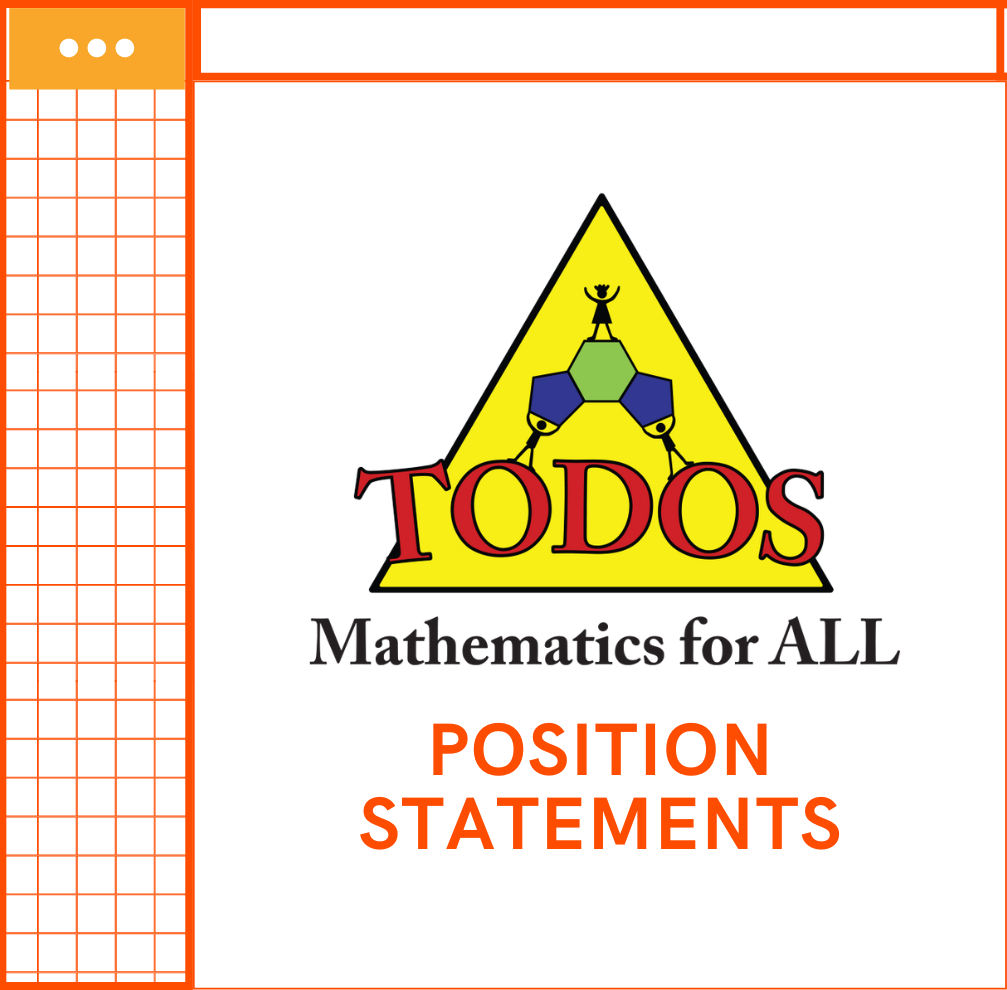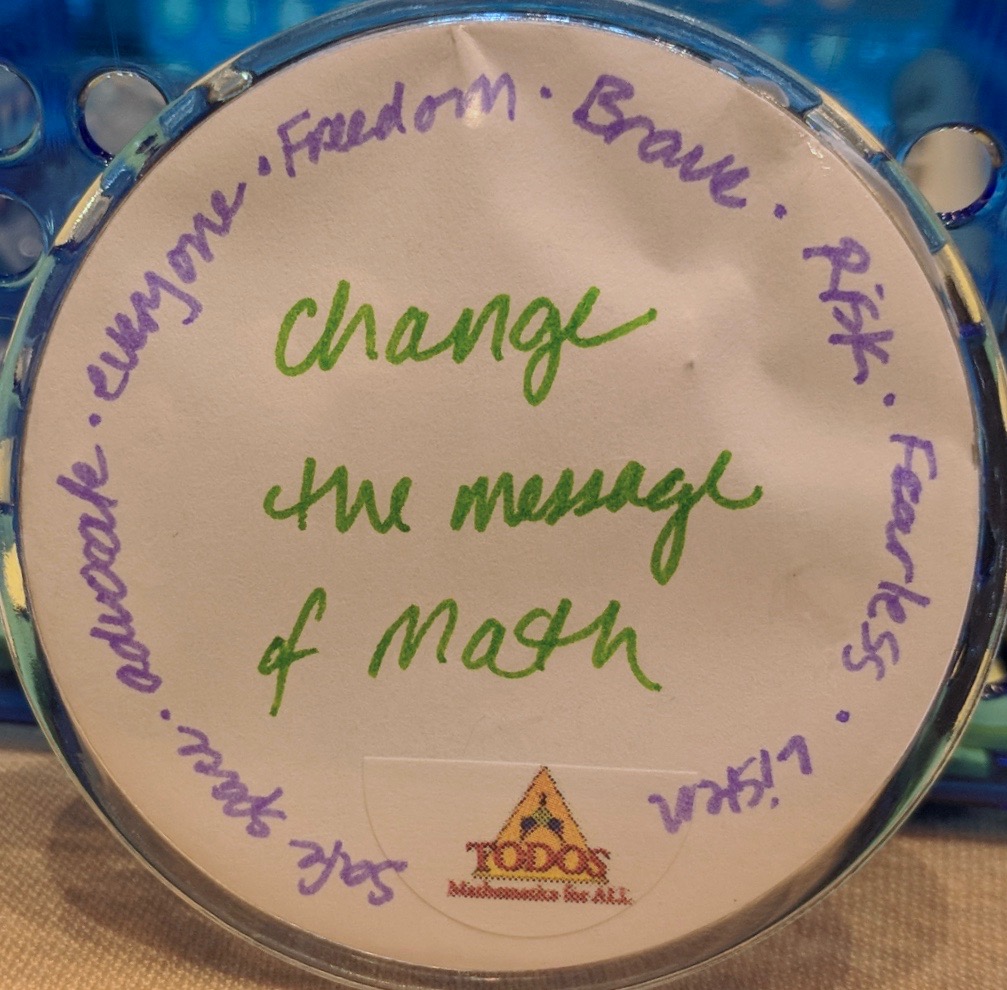¡Alerta, Wildfires! Our Relationship and Responsibility
Kyndall Brown, Silvia Llamas-Flores, Dee Crescitelli, and Carlos LópezLeiva
The TODOS Alerta! blog introduces a series of information and mathematics lessons on environmental issues that help us become aware of and rethink our collective relationship with our land and world. This blog- the second in the series- specifically explores the dangerous wildfires that have emerged around the US and practices that have been historically and culturally in place to relate our relationship with and responsibility for wildfires.
Wildland fires are classified as either naturally occurring or human-caused. According to the National Park Service, however, human-caused wildfires are significantly more common, with human involvement triggering 85% to 90% of wildfires (Frontline Wildfire Defense, 2024).
California’s dry climate provides prime conditions for a wildfire, and unfortunately, it doesn’t take much to spark a fire that can devastate an entire area.
What Causes Wildfires in California?
The most common causes of wildfires in California include:
- Burning Debris: One of the most common causes of wildfires is embers from burning debris. Wind can carry these embers for up to 7 miles without extinguishing them.
- Human Activity: Activities such as driving cars, pulling trailers, having a gender reveal party, or doing yard maintenance.
- Electrical Power: Fallen power lines are the third most common cause of wildfires in California and were the cause of the deadliest fire in history—the Camp Fire. However, human activity causes far more wildfires than electrical power lines.
- Campfires: Camping is an incredibly popular summer activity, but unfortunately, many campers don’t practice proper fire safety. As a result, unattended campfires are historically one of the leading causes of wildfires in the state. (Frontline Wildfire Defense, 2024).
Arson, lightning, discarded cigarettes, and equipment malfunctions are other events that can lead to devastating wildfires in California.
Indigenous Fire Suppression is an example of the 5 R’s in practice. The following is excerpted from a segment from NPR’s Science Friday, How Indigenous Burning Practices Could Prevent Massive Wildfires, which shares indigenous burning practices that used to be practiced prior to the removal of Native American peoples from California lands.
Those cultural burns—or prescribed burns, as they’re often called now by fire agencies—are a form of keeping wildfire in check, a practice the state and federal agencies do use, but experts say isn’t leaned on enough as a fire prevention tactic.
But what experts say is often missing from this conversation is the racist removal of Native American people from California. Along with their physical beings, the experts say that their knowledge of taking care of the land was also removed, resulting in overgrown forests.
While climate change and a history of fire suppression are among the top reasons why experts say wildfires have grown so big so fast, others say removing Native Americans from the landscape is an overlooked reason behind today’s explosion of fires.
Removing millennia of knowledge from the land has resulted in the wildfires we see today. And with the west engulfed in flames, it’s forcing the agencies that govern land to rethink suppressing wildfires.
One of the ways Native Americans helped keep land healthy was through prescribed or managed fire. That’s where fires are lit on purpose to keep extra fuel from building up. Reengaging with tribes to expand prescribed burns could be a way to “burn the traces of racism even as it makes those forests healthier.
There were around 350,000 Native Americans historically who lived across California, and they burned 2% of the state annually as a form of protection, food supply, and for the health of the ecosystem.
What was removed is the spiritual connection Native Americans have with the land, which, in part, resulted in the fire suppression we are experiencing more than a century later. Some of the Forest Service agencies in this area have “completely embraced” a collaborative stewardship process and have hired Native Americans to lead their ecological and fire divisions.
Indigenous fire suppression shows responsibility for the land. Large-scale destruction of the landscape is prevented by initiating smaller, controlled burns. Indigenous fire suppression is also a form of reciprocity. Caring for the land through fire suppression protects the land for agriculture and wildlife.
The following link has a list of California wildfires from 2000 to 2022. This will assist you in completing the activities described below.
Activities Investigating the Size of California Wildfires
Read the article on Wikipedia and explore the Frontline Wildfire website: What Causes Wildfires? Understanding Key Risk Factors | Frontline.
The two investigations below are aligned with the American Statistical Society” 's Guidelines for Assessment and Instruction in Statistics Education (GAISE) Framework statistical reasoning cycle:
1) Formulate Questions
2) Collect Data
3) Analyze Data
4) Interpret Results
We will use this framework to ask questions and analyze data related to the California Wildfires.
Investigation #1
1) Formulate Questions
Are California Wildfires getting larger?
2) Collect Data
Use the data from Wikipedia to create a table with the year and the number of acres burned. Then, use the table to create a scatter plot.
3) Analyze Data
Based on the trend of the data, what type of function would best model it? Use a graphing calculator or software (e.g., Desmos) to find the model of best fit (regression). What function models the data? Contextually explain the meaning of the parameters in your equation.
4) Interpret Results
Using the model, predict how many acres will burn in 2024.
Investigation #2
1) Formulate Questions
Are deaths from California Wildfires increasing?
2) Collect Data
Use the data from Wikipedia to create a table that lists the year and the number of deaths from wildfires. Use the table to create a scatter plot.
3) Analyze Data
Based on the trend of the data, what type of function would best model it? Use a graphing calculator or software (e.g., Desmos) to find the model of best fit (regression). What function models the data? Contextually explain the meaning of the parameters in your equation.
4) Interpret Results
Using the model, predict how many people will die from California wildfires in 2024.
References
Frontline Wildfire Defense. What Causes Wildfires? Understanding Key Risk Factors. Retrieved from https://www.frontlinewildfire.com/wildfire-news-and-resources/what-causes-wildfires/ Friday, February 2, 2024. 11:21 a.m.
Levin Simes. Electrical Power 3rd Most Common Cause of CA Wildfire. Retrieved from https://www.levinsimes.com/blog/electrical-power-3rd-most-common-cause-of-wildfire Friday, February 2, 2024. 11:30 a.m.
List of California wildfires. Wikipedia. Retrieved from https://en.wikipedia.org/wiki/List_of_California_wildfires Friday, February 2, 2024. 11:38 a.m.
National Park Service. Wildfire Causes and Evaluations. Retrieved from https://www.nps.gov/articles/wildfire-causes-and-evaluation.htm Friday, February 2, 2024. 11:14 a.m.
Romero, Ezra D. (2020). How Indigenous Burning Practices Could Prevent Massive Wildfires. https://www.sciencefriday.com/segments/indigenous-fire-prevention/ Friday, February 2, 2024. 11:35 a.m.
Varela, Isaiah. (2024). Indigenous cultural burn lit for first time in over 100 years in Sequoia National Forest. Retrieved from https://news.yahoo.com/indigenous-cultural-burn-lit-first-025426119.html Monday, February 26, 2024. 11:15 a.m.


